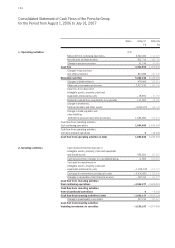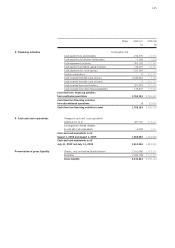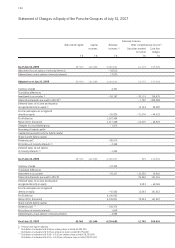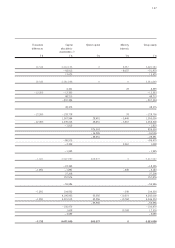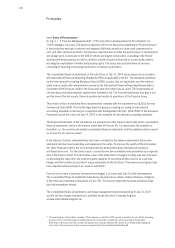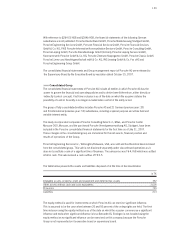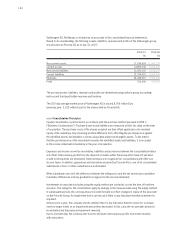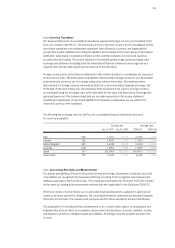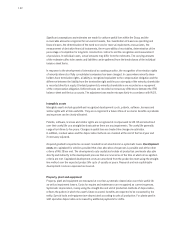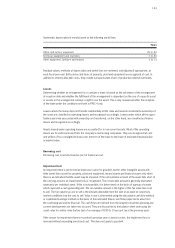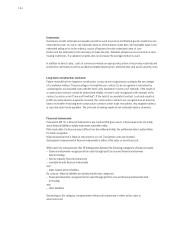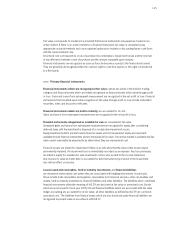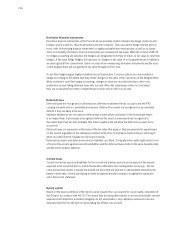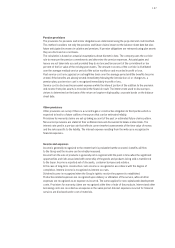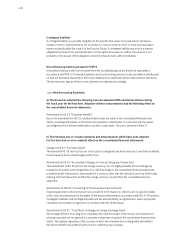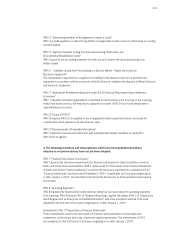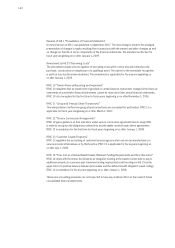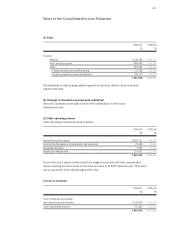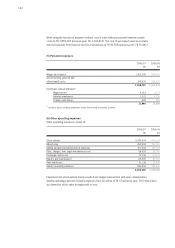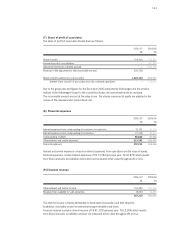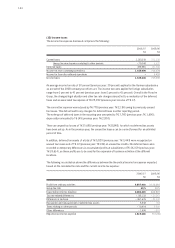Porsche 2006 Annual Report Download - page 136
Download and view the complete annual report
Please find page 136 of the 2006 Porsche annual report below. You can navigate through the pages in the report by either clicking on the pages listed below, or by using the keyword search tool below to find specific information within the annual report.134
Inventories
Inventories include materials and supplies as well as work in process and finished goods. Inventories are
stated at the lower of cost or net realizable value as of the balance sheet date. Net realizable value is the
estimated selling price in the ordinary course of business less the estimated costs of com-
pletion and the estimated costs necessary to make the sale. Valuation allowances are recorded on slow-
moving inventories. If a valuation simplification is necessary the average method is used.
In addition to direct costs, costs of conversion include an appropriate portion of necessary materials and
production overheads as well as production-related depreciation, administrative and social security costs.
Long-term construction contracts
Future receivables from long-term construction contracts are recognized according to the percentage
of completion method. The percentage of completion per contract to be recognized is calculated by
comparing the accumulated costs with the total costs expected (“cost-to-cost” method). If the result of
a construction contract cannot be determined reliably, income is only recognized at the amount of the
contract costs incurred (“zero profit method”). If the total of accumulated contract costs and reported
profits exceeds advance payments received, the construction contracts are recognized as an asset as
future receivables from long-term construction contracts under trade receivables. Any negative balance
is reported under trade payables. The principle of valuing assets at net realizable value is observed.
Financial instruments
Pursuant to IAS 39, a financial instrument is any contract that gives rise to a financial asset at one entity
and a financial liability or equity instrument at another entity.
If the trade date of a financial asset differs from the settlement date, the settlement date is authoritative
for initial recognition.
Initial measurement of a financial instrument is at cost. Transaction costs are included.
Subsequent measurement of financial instruments is either at fair value or amortized cost.
With respect to measurement, IAS 39 distinguishes between the following categories of financial assets:
– financial instruments recognized at fair value through profit or loss and financial instruments
held for trading
– held-to-maturity financial instruments
– available-for-sale financial instruments
and
– loans issued and receivables.
By contrast, financial liabilities are divided into the two categories
– financial instruments recognized at fair value through profit or loss and financial instruments held
for trading
and
– other liabilities.
Depending on the category, measurement of financial instruments is either at fair value or
amortized cost.


